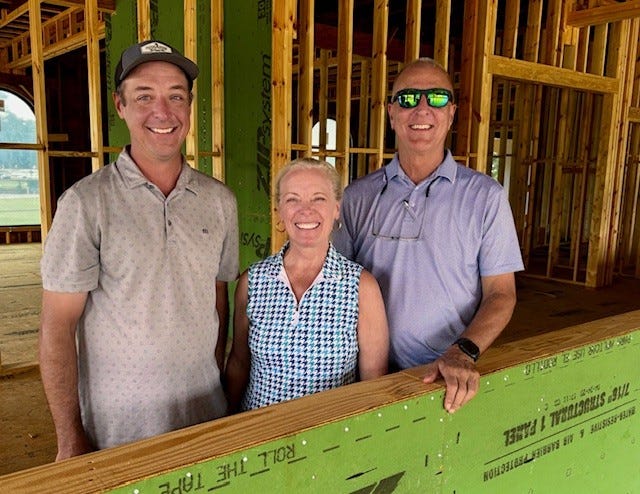If a golf course can be compared to a fictional character, the Hyde Park Golf Club is the Rocky Balboa of the First Coast.
The Westside facility keeps punching, gets knocked down, pulls itself from the canvas and bellows to the Golf Gods, “Give me your best!”
Hyde Park has endured almost every financial and agronomic challenge a golf course can face. Not only is it still standing but it’s on the verge of celebrating its 100th year.
A clubhouse renovation project overseen by owners Melanie and Tommy Bevill is due for a late fall completion, a new irrigation system and water pumping system is in place and course changes will be made next year that include restoring many of the original bunkers, rebuilding 18 new tees to lengthen the course beyond its current 6,400 yards from the tips and renovating the greens.
It’s an even more remarkable survival story considering seven public golf courses on the Westside and Northside have closed in the last quarter-century: the Course at Westland (also known as Willow Lakes), West Meadows, Cecil Field, Panther Creek, Deerfield Lakes, Fort George and Pine Lakes.
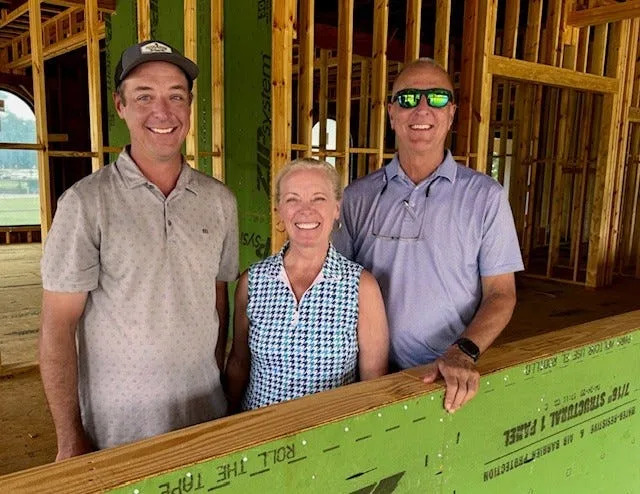
The Bevill Family is overseeing the renovation of the Hyde Park Golf Club and its clubhouse on Jacksonville’s Westside. From the left are general manager Garrett Bevill and his parents, Melanie and Tommy Bevill. Melanie Bevill’s father, eight-time PGA Tour winner Billy Maxwell, owned the course until his passing in 2021.
Hyde Park, built decades before any of them, has outlasted all of them.
“It has drawn people from all over North Florida, from all backgrounds and all economic levels,” said 1988 Players champion and 10-time PGA Tour winner Mark McCumber. He grew up in a house adjacent to the 14th fairway on Hyde Grove Avenue and has Hyde Park memories going to back to when he was 4 years old and searched for lost golf balls that had trickled under the property’s perimeter fence.
“It’s a beautiful piece of land with a rich history,” he said.
Hyde Park is the oldest First Coast public course still open
With the closure of the 108-year-old Keystone Heights Golf Course in March, Hyde Park is now the oldest continuously operating public golf course on the First Coast. It was built in 1925, opened in 1926 − and despite economic challenges throughout much of its history, the club is now doing robust business, with more than 44,000 rounds played last year and on a track to surpass that number this year.
Hyde Park has been through ownership changes (it started out as a private club, has been a municipal course and since 1959 has been public), name changes (remember the days when it was called “Pine Tree?”) and ebbs and flows in conditioning and the changing of its surrounding neighborhood.
It has not missed a beat despite recent evidence unearthed by Golf Digest’s long-time architecture writer and a Live Oak course designer that Hyde Park may not be a Donald Ross design.
And the club also survived the controversy involving the city of Jacksonville divesting itself of Hyde Park and Brentwood in 1959, rather than comply with a U.S. District Court ruling that said the city’s policy of allowing African-Americans to play each course only one day per week (Hyde Park was open to African-Americans on Fridays) was unconstitutional.
Brentwood eventually closed, until nine holes were re-opened in 2000 as a First Tee facility.
Hyde Park stayed open, as it will into its second century, vows the family that inherited the club from longtime owner and eight-time PGA Tour winner Billy Maxwell.
Melanie Bevill is motivated to honor her father
“You watch these other golf courses going belly-up and we’re continuing to run the race, slow and steady,” said Melanie Bevill, Maxwell’s daughter, who has managed the course with her husband Tommy since her father’s passing in September of 2021.
If progress seems slow since the clubhouse was first gutted in 2021, it’s because the Bevill family has had to foot the bill on their own from revenue generated from the course. Since Hyde Park is public, there is no private membership to assess, and it’s not owned by a management company or corporation that could finance the improvements.
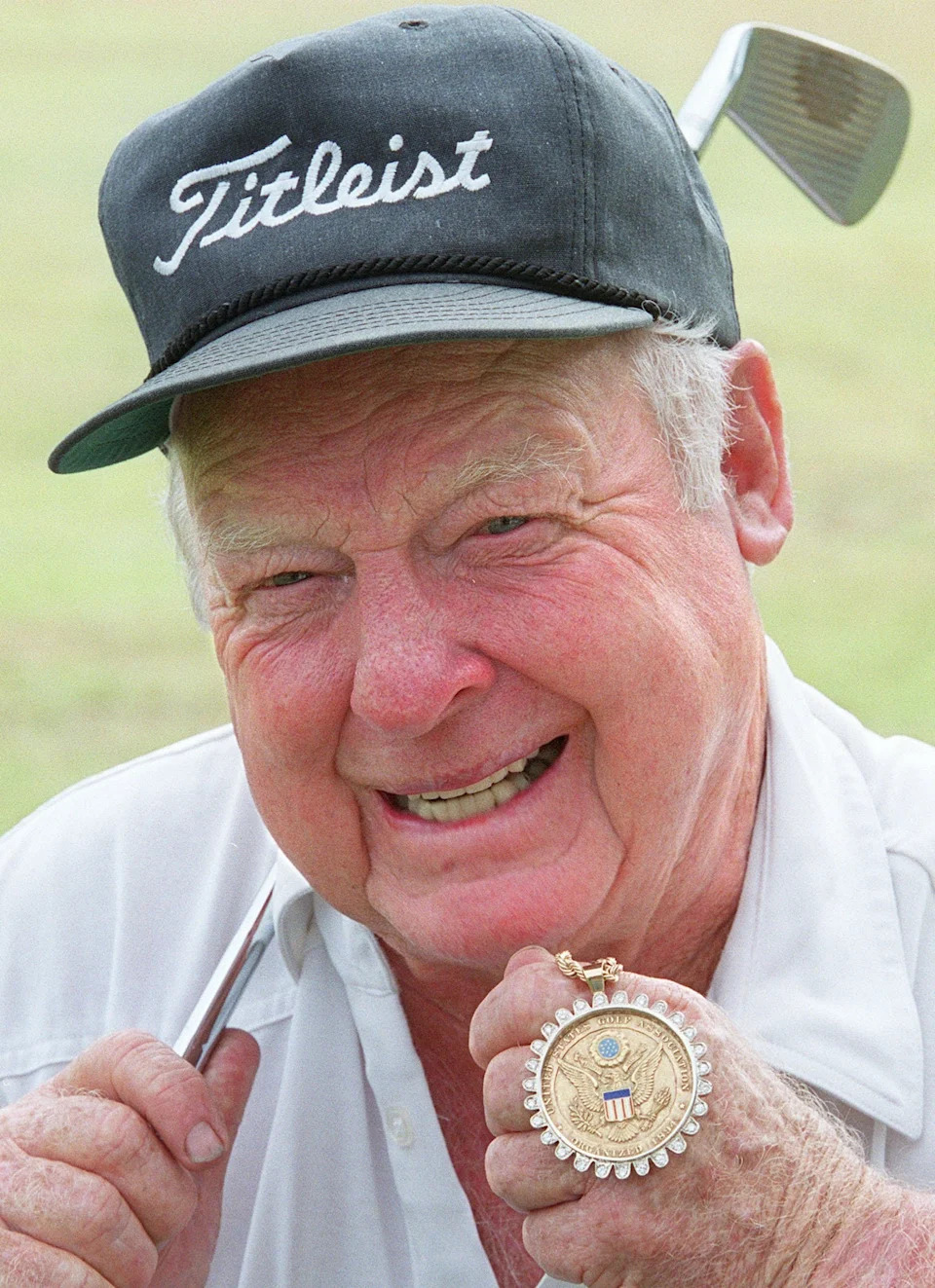
Billy Maxwell, holding the medal he won in 1951 for the U. S. Amateur golf championship, owned the Hyde Park Golf Club with partner Chris Blocker from 1971 to his passing in 2021.
“We’re the Mom and Pop operation,” Tommy Bevill said. “It has been a challenge but luckily, we are doing it.”
And Melanie Bevill said their motivation is strong: keeping Hyde Park going and renovating the clubhouse and the course is the best way to honor her father. Maxwell bought the course with fellow PGA Tour player Chris Blocker (who passed away in 2016) and was a fixture almost daily on the range for years, dispensing tips, wisdom, tall tales and homespun Texas philosophy from his favorite spot on the practice range.
“We’re honoring my dad,” she said. “I would give anything for him to see what we’ve done and what we’re doing. He would be so excited. And that’s the part that makes us the happiest. We’re carrying on his legacy.”
Ready to continue that legacy deep into the second century of Hyde Park golf is Maxwell’s 39-year-old grandson Garrett Bevill, a University of North Florida graduate who is the general manager and is dedicated to keeping the family business thriving as long as he can.
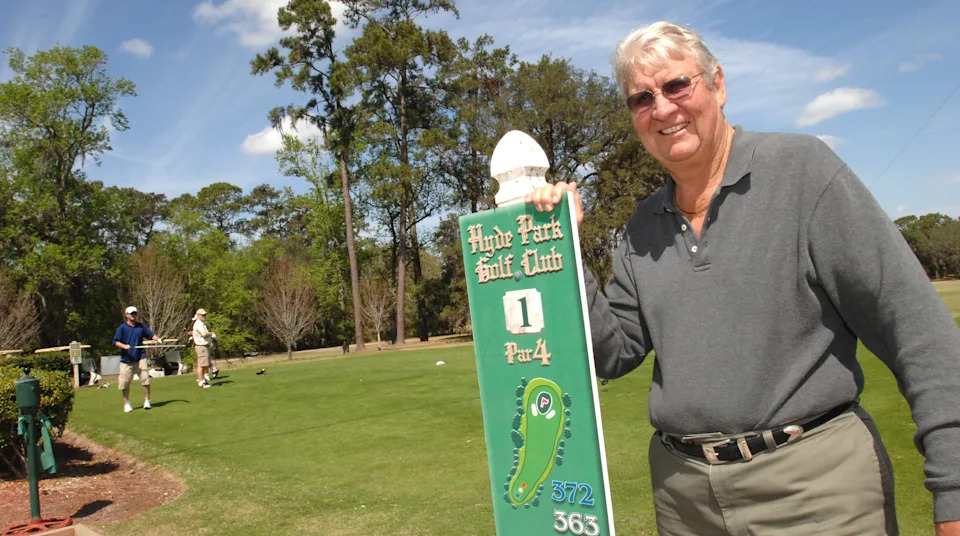
Chris Blocker was the co-owner of Hyde Park Golf Club with Billy Maxwell from 1971 until his passing in 2016.
“I’m all in,” said Bevill, a former golf equipment designer and IT specialist in the mortgage industry who is working on his PGA of America Class A license. “We’ve been talking about it for a long time and when I decided to do it [work at Hyde Park], it was the right time.”
Hyde Park began as a private course
Hyde Park was developed as a residential community and private golf course by Forrest Hyde, a former member of the Duval County Board of County Commissioners. Construction began in 1925 and it opened on Dec. 2, 1926, to great fanfare, including a golf tournament with members and some of the area’s top club professionals.
Hyde Park hosted PGA and LPGA Tour events in the 1940s and 1950s, with World Golf Hall of Fame members such as Cary Middlecoff, Doug Ford, Mickey Wright and Marilyn Smith among the winners.
It also has bred McCumber and two-time Korn Ferry Tour winner and past PGA Tour member Charles Raulerson.
Hyde Park is not only an ingenious design but it’s on a piece of land that could easily have been a nature preserve or a park. Tall pines and stately oaks line the fairways. Spanish moss drips from tree branches. There are natural elevation changes not seen in most other First Coast courses.
It’s Old Florida at its most scenic.
“You’d never think you’d see geography like that in the middle of Jacksonville,” McCumber said. “Rolling hills, those magnificent pines and oaks … to this day I don’t think there’s a more beautiful stretch of finishing holes in this area than No. 15 through No. 18 at Hyde Park.”
Following its time as a city-owned course, Hyde Park remained popular with PGA Tour players looking for a place to play before the Greater Jacksonville Open from 1965-1976 and Maxwell and Blocker enjoyed the course so much that they bought it in 1971.
From then on, it thrived as one of the top public courses in Jacksonville. Maxwell resisted numerous offers to sell the course, and Melanie Bevill said almost all of them involved developers who wanted to close the course for either residential, retail or industrial purposes.
Melanie Bevill began working at the golf course in 2001 and since her father passed away, Tommy Bevill has taken an active role in course and clubhouse renovations. He has an architecture degree from Georgia Tech and has been a builder for almost all of the 38 years he and his wife have been married.
Family and playability are the course’s identities
On an early summer July day, Hyde Park was busy for a Tuesday. Despite heavy equipment operators working on the 14th tee and other areas of the course, there was a group playing nearly every hole, including Alan White and his 12-year-old grandson Kamryn.
“I’ve been coming here since 1961 … lived just a mile away from here,” said White, who is a Lee High School classmate of McCumber. “Guys grow up playing here, and they bring their kids and grandkids. It’s accessible for all levels of play. The PGA Tour used to play here, but below-average golfers can have fun.”
Mike Millis, another long-time player at Hyde Park, said the wide fairways accept drives both left and right.
“You don’t have to hit draws or fades off the tee … just do the best you can at getting it down the middle and you can play it from there,” he said.
Millis also said the course has survived for a century for a reason.
“It’s reasonably priced, centrally located and fun to play,” he said. “That’s why people keep coming back.”
Raulerson began playing at Hyde Park at the age of 8 when his family lived in the nearby Londontown Apartments. New residents there got a one-year membership and Raulerson and his father took full advantage of it.
“It was centrally located to downtown Jax and at there was a time when the wealth of Jacksonville was really around the [St. Johns] River,” Raulerson said. “You had Avondale, Riverside, Ortega and people from those areas either played at Timuquana or they played Hyde Park. It’s just a great golf course and a fun golf course, from No. 1 to No. 18. It has holes that go left or right, uphill or downhill, on a very nice piece of property.”
Boots Farley, a long-time Northern Chapter PGA professional, played at Hyde Park as a junior and into his professional years.
“It’s a great layout and a great location,” Farley said. “Is it in pristine condition like the TPC Sawgrass? No? But it’s in good enough shape and the average guy can go out there, hit it, find it and hit it again. I’ve always had a good time there.”
McCumber calls Hyde Park a great example of a “core” golf course: 18 holes within a relatively modest piece of land, with greens near the next tee and the playing area unencumbered by residential or commercial structures.
“You can walk the course in three hours,” he said. “You walk off one green and you’re there at the next tee, not going down a residential road between houses. It has a good rotation, it doesn’t have water everywhere and even though there are a lot of trees, you can play shots out of the trees.”
Hyde Park is such a popular track that members of private courses such as Timuquana and San Jose often make a short trip on days when their courses are closed for maintenance or outside tournaments.
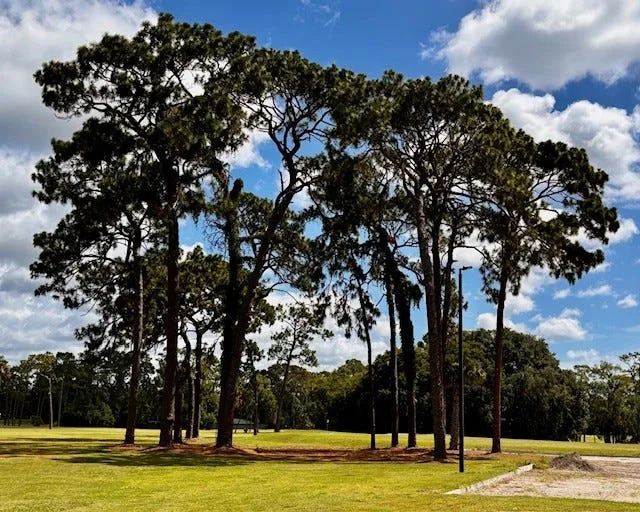
Trees frame the seventh green of the Hyde Park Golf Club.
On this July day, San Jose member Rufus Dowell came to the first tee with a group from his club, including Mark Taylor — who made a hole-in-one at Hyde Park’s testy and long par-3 fourth hole, from 235 yards out.
“We like playing different places and we’ve been coming out here for six months now,” Dowell said. “It’s been getting in progressively better shape the entire time and it’s in great shape right now. It’s a great track, got great holes and it’s really fun to play.”
Fred Seely, a Timuquana member and former sports editor of the Florida Times-Union, said one word best describes Hyde Park.
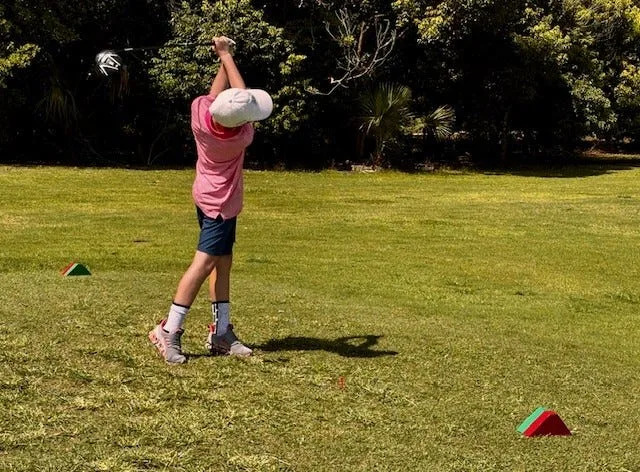
Kamryn White, 12, unleashed his tee shot at the par-5 14th hole of the Hyde Park Golf Club on July 1, 2025. White was playing with his grandfather Alan White, who has played at Hyde Park since 1961.
“The word is ‘playable,'” he said. “There’s not a whole lot going on that’s a killer and every hole is playable. That long par-3 [No. 4] and No. 15 can be hard but so many of them are easy and fun to play. People just keep going there. Anyone who’s ever lived on the Westside grew up with Hyde Park being the center of their golf experience.”
What’s in store for Hyde Park?
The renovated clubhouse looks similar to the old structure from the front but will be vastly different inside and at the back.
There will be an L-shape area taking up the entire corner facing the course that will offer views of the first and 10th tees, and the ninth and 18th greens. A decorative fountain will dominate the rear of the building.
Bevill said there will be banquet and meeting space for everything from small social club luncheons and bridal and baby showers to weddings and receptions. There will be a media room for conferences, a full-service restaurant and a 40-foot-long bar.

A heavy equipment operator moves earth as part of the renovation of the 14th tee of the Hyde Park Golf Club, on Jacksonville’s Westside.
“We’d like to think of it as a great sports bar, in and of itself,” Tommy Bevill said.
There will also be features throughout the clubhouse honoring Maxwell and Blocker, the rest of the course’s history, and its past with the PGA Tour and LPGA.
In terms of golf course changes, the 14th tee is being moved further away from the front gate, which will make the hole a bit shorter. However, almost all of the other holes will have new tees to add length, more trees will be taken out to bring more sunlight and air throughout the course and Tommy Bevill said the bunker at the famed sixth hole will be restored, along with an estimated 30 other bunkers that were taken out between 1953 to 1965.
Plans are to renovate the greens next year with Tifeagle Bermuda.
Although plans are still fluid pending the completion of the clubhouse, the Bevills are planning a centennial celebration that could include a re-dedication of the course and a golf tournament. Given Hyde Park’s history as a municipal course, he said city officials, including Mayor Donna Deegan, will be invited.
“We want to get together with the city, the mayor, whoever we can to participate in this because it’s not just about Hyde Park,” Tommy Bevill said. “It’s about our place in the community.”
And the Bevills have every intention of holding that place well into another century.
“I’ve played there a million times and tried to buy it five or 10 times,” said Raulerson, who owns the Fleming Island Golf Club. “Billy and Chris always wanted to keep it and Melanie and Tommy are doing a good job investing in its future. When they open the clubhouse and redo the greens, they’re going to have a masterpiece.”
PGA Tour, LPGA Tour at Hyde Park
The PGA Tour and LPGA have a rich history in their brief periods playing at Hyde Park.
Among the highlights: Mickey Wright won the first of her 82 career victories at the Jacksonville Ladies Open in 1956 at the age of 21, on her way to the World Golf Hall of Fame. She earned $900 and went on to win two more times. … Hall of Fame members won all four JLOs, with Marilyn Smith capturing the 1958 tournament. … Hall of Fame members Cary Middlecoff and Doug Ford won Jacksonville Opens at Hyde Park, with Ford winning his first career title. … The 1947 Jacksonville Open included 21 playoff holes between winner Clayton Heafner and Lew Worsham. Rules then called for an 18-hole playoff and both players shot 71. Heafner then won with a par on the third hole of sudden death.
Here’s the history of PGA Tour and LPGA Tour events at the Hyde Park Golf Club with the years and winners:
PGA Tour
-
1947: Jacksonville Open, Heafner beat Lew Worsham in the 21-hole playoff after both shot 3-under 284.
-
1950: Jacksonville Open, Middlecoff was 9-under 279 to beat George Fazio by two shots.
-
1951: Jacksonville Open, Jim Ferrier overwhelmed Lloyd Mangrum and Jack Shields by 11 shots at 16-under 272.
-
1952: Jacksonville Open, Doug Ford won in a controversial finish. He and Sam Snead shot 8-under 280 but Snead remained troubled about a favorable ruling he received in the second round at the 10th hole and decided the rules official was mistaken. He then forfeited the 18-hole playoff to Ford.
-
1953: Jacksonville Open, Lew Worsham shot 16-under 272 to beat Ferrier by one shot.
LPGA Tour
-
1956: Jacksonville Ladies Open, Mickey Wright won her first LPGA title by one shot over Joyce Ziske, posting 6-over 295.
-
1957: Jacksonville Ladies Open, Wright followed up with a victory over Marlene Hagge at 7-over 295.
-
1958: Jacksonville Ladies Open, Marilyn Smith shot 11-over 299 to beat Fay Crocker.
-
1959: Jacksonville Ladies Open, Wright won for the third time at 2-under 286, topping Betsy Rawls.
The legend of Hogan’s Alley
Although it wasn’t on national TV and there was no Golf Channel or ESPN “Not Top 10,” there was a moment at the 1947 Jacksonville Open at Hyde Park where Ben Hogan, a charter member of the World Golf Hall of Fame and nine-time major champion, was not only a mere mortal but turned into a 20-handicap hacker at the par-3 sixth hole at Hyde Park.
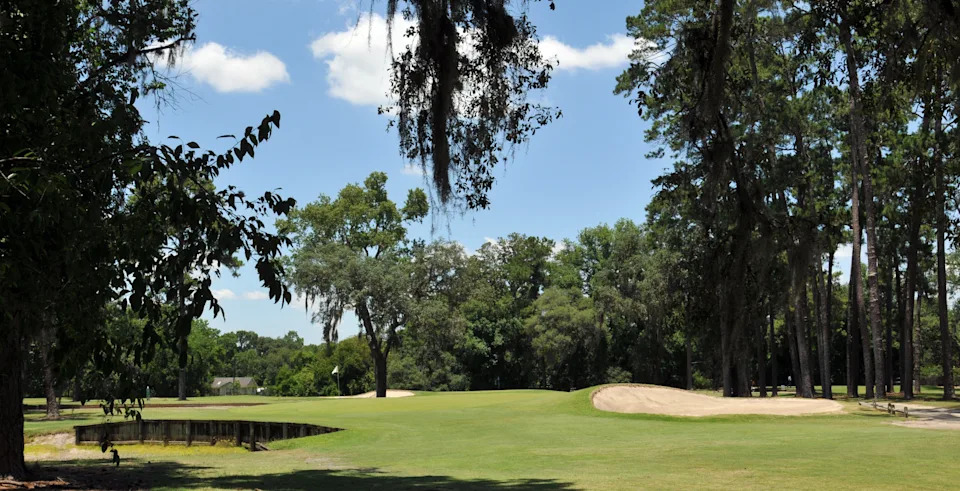
The par-3 sixth hole of the Hyde Park Golf Club shows the large bunker on the right and the edge of the pond on the left that led to World Golf Hall of Fame member Ben Hogan making an 8-over 11 during the 1947 Jacksonville Open.
During the third round on March 15, a cold, rainy day by accounts of the tournament, Hogan hooked a 7-iron tee shot at the 151-yard hole. It rolled into the water hazard left front of the green and came to rest in several inches in water.
He walked off the green with an 11. That’s right: 8-over on one hole.
“I’ll never forget that one,” Hogan told veteran Jacksonville club pro Bob Duval years later, with Duval relating the conversation to Jacksonville Journal columnist Gene Pullen on Nov. 14, 1987. “I hooked it left … way left.”
Then, as Hogan put it, “I tried to get cute.”
There was nothing cute about it. Here’s a shot-by-shot account of what happened:
-
Shot No. 1: Hogan, who battled a hook his entire career, did just that with his tee shot, into the edge of the pond.
-
Shot No. 2: Hogan tried to chip the ball out of the water, but stayed in.
-
Shot No. 3: Hogan attempted the same shot, with the same result.
-
Shot No. 4: Yes … Hogan tried to chip the ball out of the water again, and it stayed in.
-
Shot No. 5: Incredibly, Hogan, who was a master of course management and situational golf, tried for the fourth time in a row to chip the ball out of the water, and failed.
-
Shot No. 6: Hogan took an unplayable lie and dropped the ball behind the pond.
-
Shot No. 7: Hogan fluffed the ball back into the water.
-
Shot No. 8: Hogan took a penalty shot and dropped behind the pond again.
-
Shot No. 9: He finally got the ball on the green and had a 15-foot putt.
-
Shot No. 10: Hogan missed his putt, leaving a 1-footer.
-
Shot No. 11: Hogan tapped in for the 11.
Not for nothing did Scottish golf fans dub Hogan “the Wee Ice Mon” when he won the 1953 Open Championship at Carnoustie. Hogan shook off the disaster and birdied the par-4 seventh hole. He then closed out the day with a 73, which would have been a 65 had he parred No. 6.
Hogan shot a 68 the next day and finished tied for 15th, nine shots behind winner Clayton Heafner. Had it not been for the eight extra blows at No. 6, Hogan would have been deep in contention in the final round and might have won 65 PGA Tour titles instead of 64.
Hyde Park’s architect: Ross or Thompson?
For most of Hyde Park’s history, it was assumed that World Golf Hall of Fame architect Donald Ross designed the course.
It was understandable. Ross, a native of Scotland, designed Timuquana, San Jose, Brentwood, the Ponce de Leon, Keystone Heights, Palatka, Fort George and the Brunswick Country Club.
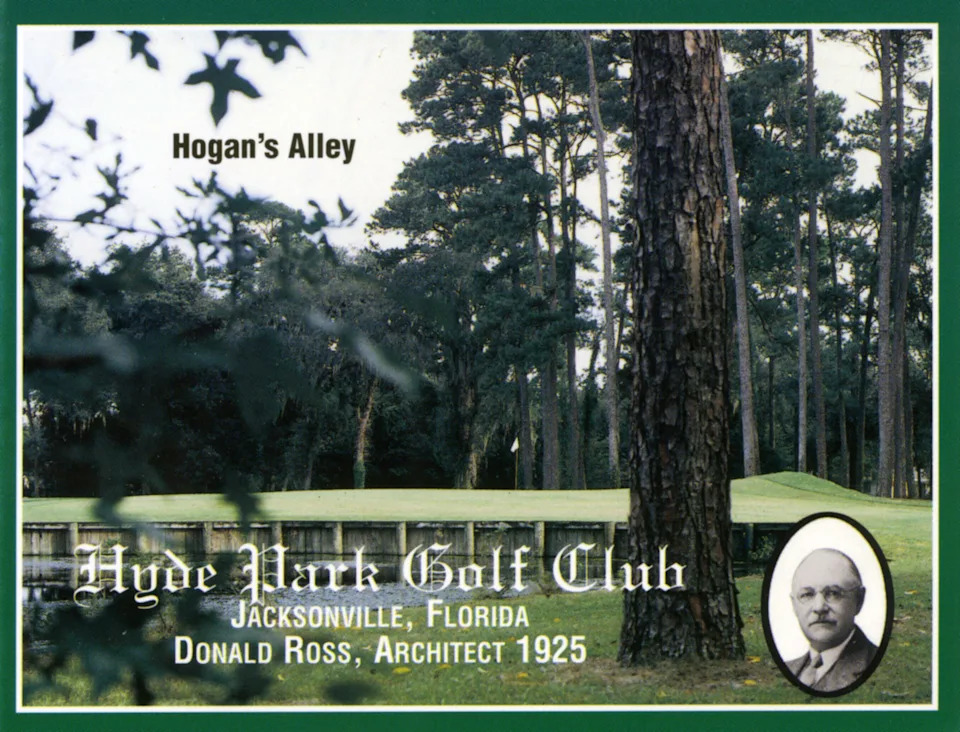
A scorecard for the Hyde Park Golf Club depicting Donald Ross as the architect. Research has since shown that Stanley Thompson of Canada was the designer.
And Hyde Park has many Ross characteristics: push-up greens that slope back to front, movement left and right in the fairway, false fronts to greens and the ability to play the ball on the ground, with few forced carries.
Golf Digest architecture editor Ron Whitten first poked holes in the notion that Ross designed the course, contending in a 20009 article that Canadian Stanley Thompson was the architect. Whitten pointed out that Hyde Park was one of the few courses where none of Ross’ blueprints are archived at the Tufts Museum in Pinehurst and cited two articles, in the Jacksonville Journal in 1926 and the Saturday Evening Post in 1948 that attribute the “building” of the course to Thompson.
Jay Smith, a Live Oak architect hired by the Bevills in 2021 for some early consulting work on the course, unearthed a 1926 residential plot from the Jacksonville Historical Society that called the property the “Hyde Park Country Club.” Smith began searching the internet using that for an SEO term and uncovered three more references to Thompson designing Hyde Park:
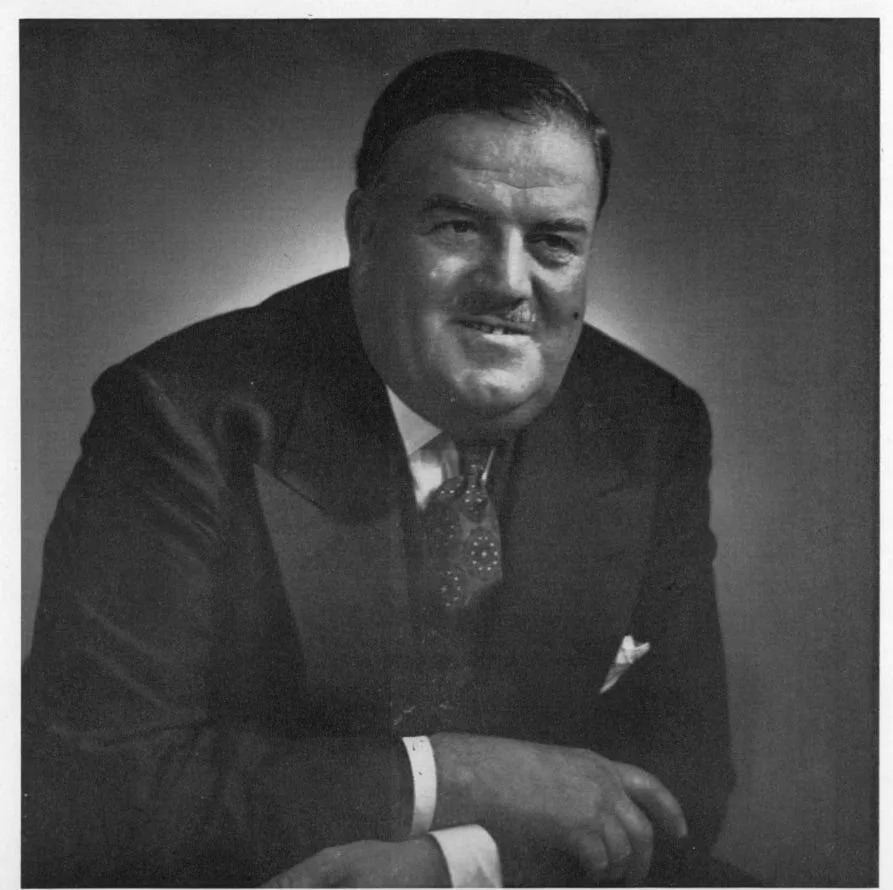
Stanley Thompson designed, remodeled or constructed 145 courses in Canada, the United States, the Caribbean and South America and designed the Hyde Park Golf Club in Jacksonville.
• A May 13, 1926, article in the Miami News that referred to a meeting among Hyde, Frank Thompson, the brother and business partner of Stanley Thompson, and Bowman-Biltmore Hotels vice-president Charles F. Flynn — who previously lived in Jacksonville and served on the Duval County board of county commissioners with Hyde. According to the article, “Mr. Hyde is engaged in actively directing the energies of the Hyde Park Co., a development corporation of Jacksonville. With Mr. Hyde on his trip to Miami is Frank Thompson, noted Toronto golf architect, who is designing and building the Hyde Park Country Club links.”
• A Dec. 4, 1926, article in the Florida Times-Union on a tournament commemorating the opening of Hyde Park states: “The Hyde Park course … was laid out by the famous Canadian architect Stanley Thompson.”
• And from a short item in Canadian Golf Magazine’s March 1925 edition: “Mr. Stanley Thompson, the Toronto Golf Architect, has been busily engaged the past two months laying out no less than three new golf courses in Florida. They are the Neilhurst Links, near Jacksonville; the Jacksonville Civic Course; and the Hyde Park Golf Course.”
Smith’s possible answer to why Hyde Park was linked to Ross is confusion between the Jacksonville Course and a Cincinnati course Ross designed near Cincinnati, also called Hyde Park.
However, Ross listed Hyde Park in his self-published memoir as one of his designs and the Donald Ross Society lists Hyde Park.
So does the Stanley Thompson Society.
The Bevills are fine with the historical proof that Thompson may be the architect.
“Nothing changes the history that has been made here and the people who have come here for 100 years and enjoyed this course,” Melanie Bevill said.
This article originally appeared on Florida Times-Union: Hyde Park Golf Club: Jacksonville’s public course gem approaching 100 years
